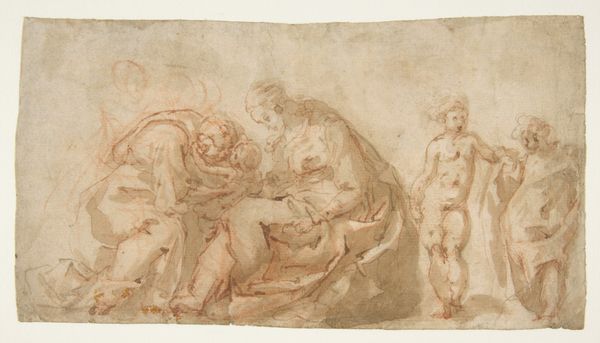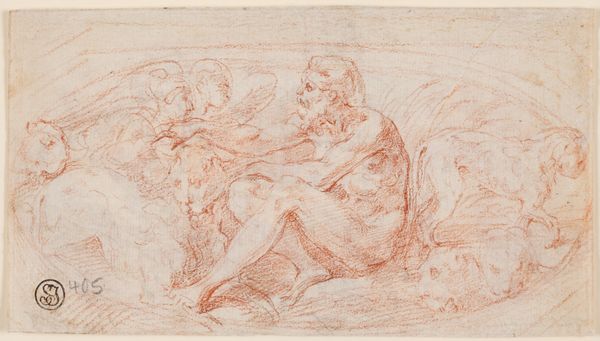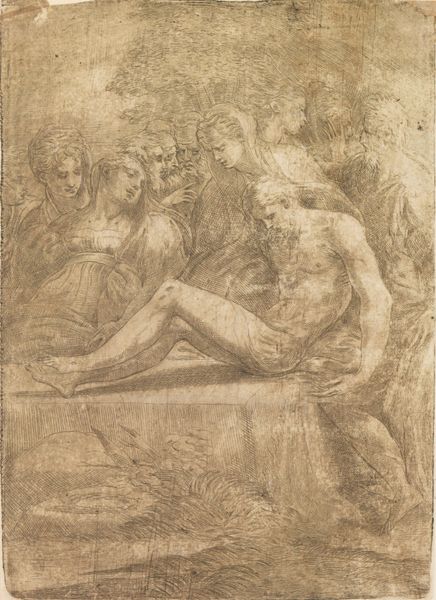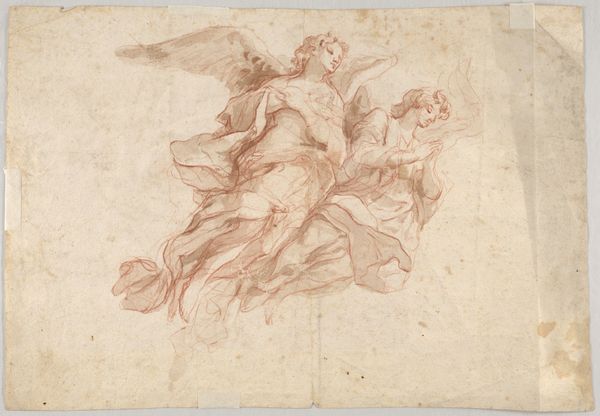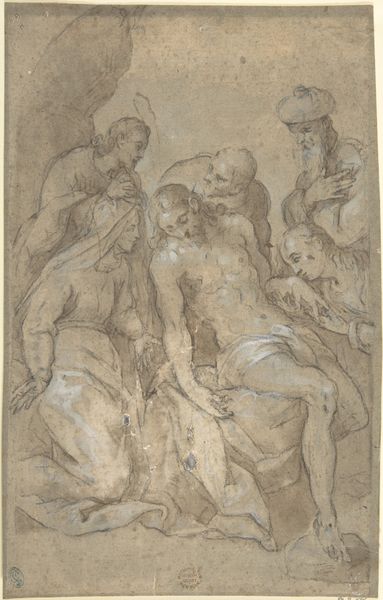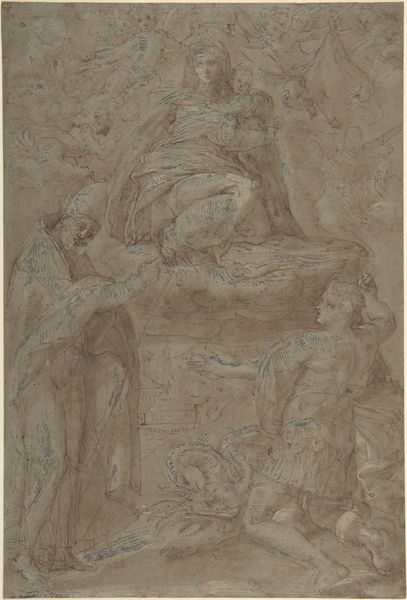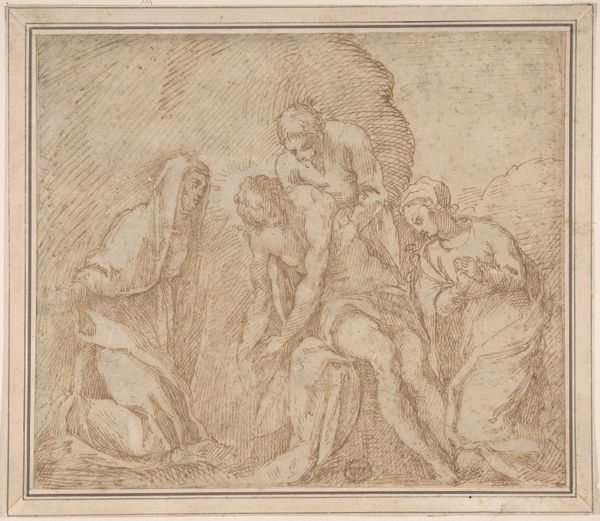
drawing, print
#
portrait
#
drawing
# print
#
figuration
#
11_renaissance
#
history-painting
Dimensions: 7-13/16 x 10-5/8 in. (19.9 x 27 cm)
Copyright: Public Domain
Curator: There's an undeniably somber mood evoked in this drawing. It features the dead Christ mourned over by angels, made sometime between 1600 and 1700 by an anonymous artist. It resides here with us at the Metropolitan Museum of Art. Editor: The material rendering really stands out; this is just red chalk or maybe a sanguine drawing on paper. You can almost feel the texture of the paper itself, adding a kind of raw, earthly element to the divine scene. Curator: It's intriguing how a print like this, even when reproduced, played a role in disseminating religious narratives during the Renaissance. It's part of the ongoing use of visual imagery by religious institutions to shape belief. The emotional expressions, especially on the faces of the angels, clearly aim to elicit pathos and piety. Editor: Absolutely, the transfer of faith through circulated media! What gets my attention, however, is how the medium interacts with the subject. Red chalk as a material suggests the earth, blood, life force, while depicting this tragic scene of loss. I wonder about the labor involved in reproducing the print and who was consuming this imagery. Curator: Well, consider that prints like these made religious iconography more accessible beyond the church walls. The format makes you think about its function within early mass communication. People were constantly renegotiating their faith alongside politics and evolving social structures. Editor: Indeed, this accessibility has important implications. A single image replicated numerous times implies distribution and a workforce required to create those copies. But does accessibility to such emotionally-charged work reinforce religious norms, or offer an alternative? Curator: I think the very act of representing these key events served to continually shape and negotiate the power dynamics between the church, the artist, and the public. An emotional connection was crucial to maintaining religious and social structures. Editor: Perhaps we can see this drawing as an intersection of spiritual representation, mass production, and human sentiment. It encourages us to really look at art as a produced object mediating between maker, audience, and belief systems. Curator: Right, and studying these images within their historical context provides essential perspectives into our understanding of a period of societal, spiritual, and political change.
Comments
No comments
Be the first to comment and join the conversation on the ultimate creative platform.
